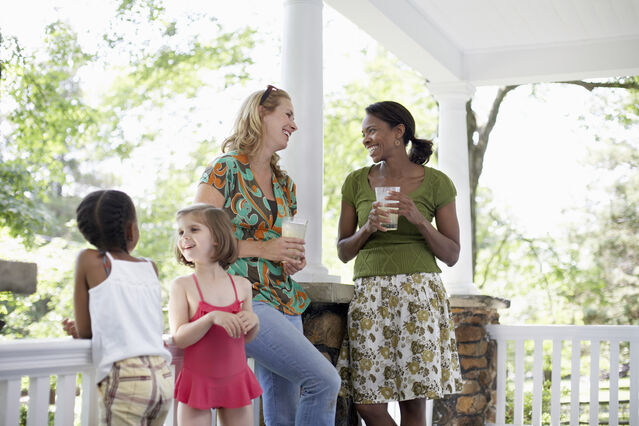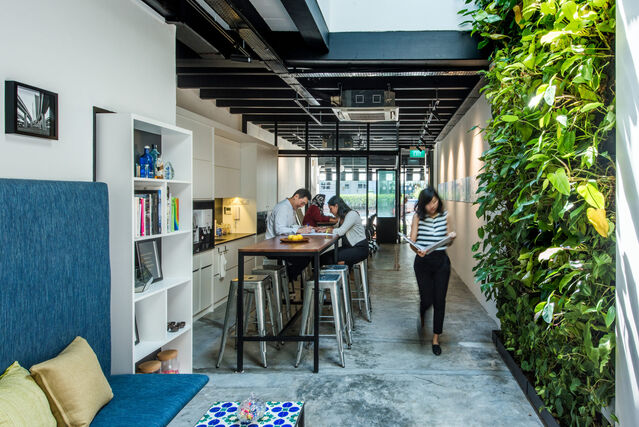Relationships
The Ties That Bind: Why Social Networks Matter
How to create places in our community that strengthen our relationships.
Posted November 22, 2021 Reviewed by Michelle Quirk
Key points
- Casual interactions in our local community help us feel we belong, strengthen resilience, and help us find employment opportunities.
- Places of connection, such as childcare centers, barbershops, and cafes, can increase social connections and overall well-being.
- Creating opportunities for interaction (focal points, shared paths) can foster connection in your office, neighborhood, or apartment building.
Each of our childhoods is buried in our work in different ways. For me, it is my love of problem-solving through storytelling and narratives. For Dr. Mario Luis Small, it's his stories of growing up in Panama in a tight-knit family with an architect father—these aspects shine through in his seminal work on social networks.
I recently had Dr. Small on the Shared Space podcast, where he discussed what social capital is and why it is important to everything from getting a job, to staying healthy, to keeping kids in school; the role of local organizations and institutions—childcare centers, libraries, barbershops—in fostering connection; and research-informed strategies for how the built environment can foster—or harm—our connections.
Social Capital
It is easier to give up when you're just by yourself all the time. –Dr. Mario Luis Small
Research at the center of Small’s explorations focuses on a dynamic that is subtly shaping your ability to get a job and your community's ability to get projects completed or successful events thrown—namely, social capital. Much in the same way economic capital (money) can help grease the wheels, get services provided, or simply make our lives easier, so, too, can social capital (relationships). Both take work and investment to create, and both can be impacted by the environment where one lives.
For example, a friend of mine received her internships because she often worked around her mother, a hairdresser, who had many well-connected clients from the community who helped open doors for her.
“You can think of social capital as all the resources you have access to by virtue of your networks.… [It is] something that you as a person have, or something that a community or even a country has,” Small said.
Small’s research discusses two types of social ties: bridging ties and bonding ties.
Bonding ties come from communities in which people have a lot in common, and they are associated with elevated trust and a sense of belonging and community. “Having people you can bond and connect to in that way—that kind of social capital is valuable [for our well-being],” he said.
Bridging ties typically refer to connections with people different than you, creating a “bridge” to other networks or communities. “[Bridging ties are t]he people who are most useful for certain kinds of things, and not necessarily the people who are most similar to you,” Small says. Those people can help with things like finding a job, gaining new clients, or simply opening new resources.
Both types of social ties are crucial to human thriving. And both are made through frequent, often casual, interactions with others.

Connecting Institutions
It turns out a lot of the reasons we feel that we belong in a community [are] because we normally run into others. –Dr. Mario Luis Small
Small’s research shows the monumental impact of community organizations and institutions on not only our ability to create social ties but also the trickle-down effects those social ties have on our overall health (mental, physical, and social), absenteeism, employment, and education.
His research has shown that we often confide personal things to people with whom we do not have intimate relationships—from flight attendants, to baristas, to hairdressers. These individuals and chance encounters often serve to form our sense of self and build our sense of belonging where the stakes are lower and connections more casual. Thus, at times, we are able to show up as more fully ourselves. Comparing our in-person office experience to our budding work-from-home norm, he remarked, “You think about the water cooler conversation—there's a big difference between the water cooler [at work] and the fridge conversation [at home].”
In his 2009 book, Unanticipated Gains: Origins of Network Inequality in Everyday Life, Small and colleagues found that enrolling children in childcare has a positive impact on the expansion of the mother’s network and, thus, on her overall well-being, even after controlling for factors like income and ethnicity. “The mental health of mothers who had kids in centers was actually higher than those with comparable kids who are not in centers… [a] very powerful mechanism was the formation of networks there,” Small said.

Designing Connecting Spaces
One can also design a space to increase the probability that the [social interaction] opportunity is capitalized on. –Dr. Mario Luis Small
Small’s research on design for social ties focuses on three mechanisms: (1) proximity (i.e., spatial propinquity), (2) shared focal points (e.g., spatial composition), and (3) shared paths of travel (i.e., spatial configuration; Small & Adler, 2019). “At a minimal level, creating an opportunity for people to interact is better than not creating the opportunity for people to interact,” Small explains, offering examples of lobby spaces or neutral gathering spaces within larger buildings. “There've been all of these fabulous studies showing—for example, take a plaza and...put a sculpture [there]—literally something to look at—and it affects the probability that people connect....”
His work shows that shared paths of travel, for instance in your office building or apartment complex, increase the chances you will have a connection (e.g., social tie) to others. For instance, studies in office buildings show that people who are positioned closer to the elevators, perhaps unsurprisingly, tend to know more people.
Small believes designers can play a big role in community building through the use of multiple design strategies that foster social connection—creating places, paths, and focal points that bring people together on a regular basis: “Online life does not replace for all of us what we had in the physical space context.”

If you’d like to read more of our conversation or listen to the audio recording, please click here.
References
Small ML. (2009). Unanticipated Gains: Origins of Network Inequality in Everyday Life. Oxford, UK: Oxford University Press
Small, M. L., & Adler, L. (2019). The Role of Space in the Formation of Social Ties. Annual Review of Sociology, 45(1), 111–132. https://doi.org/10.1146/annurev-soc-073018-022707




